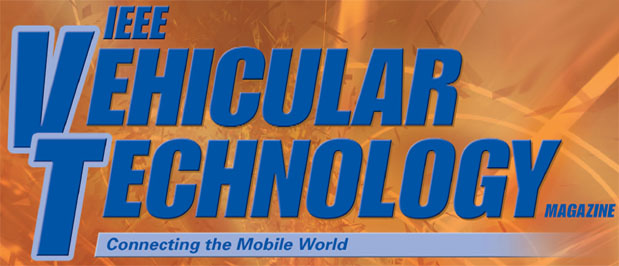Open Call for Papers on Automotive Electronics
The increasing use of electrical systems and electronic sensors and devices in vehicles and automobiles has resulted in new developments for vehicle application. Primary electronic systems found in automotive designs, inclouding critical systems, are developed to ensure better performance, reduced operating cost, and higher lifetime of future automotive systems. However, research on advanced automotive electronic technologies is still much required to design a new generation of vehicles more environmentally friendly, safer and easy to drive.
The IEEE VTM automotive electronics area is divided into three major sections:
- Vehicular electronic components, sensors, and actuators development
- Automotive electronic system design, modeling, and control
- Vehicle powertrain and energy storage systems development, control, and management for all types of electrified vehicles
This journal area aims to be a leading peer-reviewed platform and an authoritative source of original technical and research contributions in automotive electronics and its related industry drivers, such as cost, reliability, and systems integration.
Prospective authors are welcome to submit original (not published or currently under consideration by any other publication or conference) technical and research papers following the manuscript guidelines on topics including, but not limited to:
Vehicular electronic components, sensors and actuators development
Automotive and vehicle sensors and actuators, vehicle sensors network architecture, passive and semiconductor components, control units, operation management, digital modules in control units, air flow sensor, brake assist sensors, temperature sensors, electromechanical parking brake sensors, parking sensors, electronic throttle control, sensors and actuators in the electronic fuel injection system, vehicles electric and electromechanical actuators.
Automotive electronic system design, modeling and control
Vehicle system architecture, vehicles controllers, active chassis systems, collision avoidance systems, convenience and safety systems, cruise control, data processing, vehicle On-Board Diagnostics (OBD), antilock braking system (ABS), traction control system (TCS), electronic brake distribution (EBD), electronic stability program (ASP), parking assistance (PA), automatic transmissions, collision avoidance, positioning and navigation, automotive communication protocols, automotive bus systems, communication network architectures.
Vehicle powertrain and energy storage systems development, control and management
Engine control, Electrical aspects of hybrid and electric powertrains, including the design, modeling, control, and management. Battery and other energy storage devices including hydrogen technologies and recharge infrastructures. Vehicle dynamics, engine and electric propulsion systems, active differentials, regenerative braking, parallel, series and mild hybrid electric vehicle design, practical considerations, and specification of new trends in automotive powertrains including 48-volt systems.

